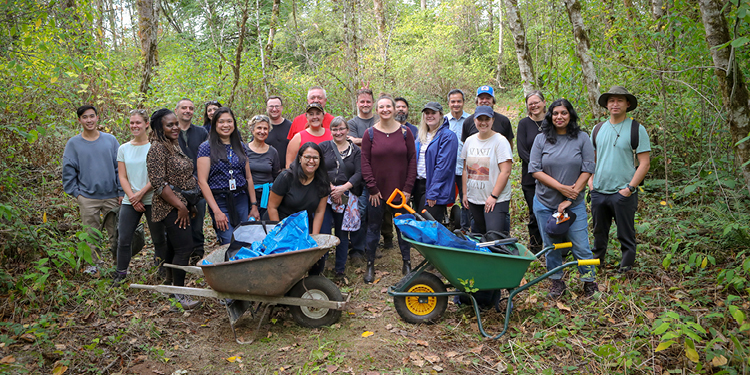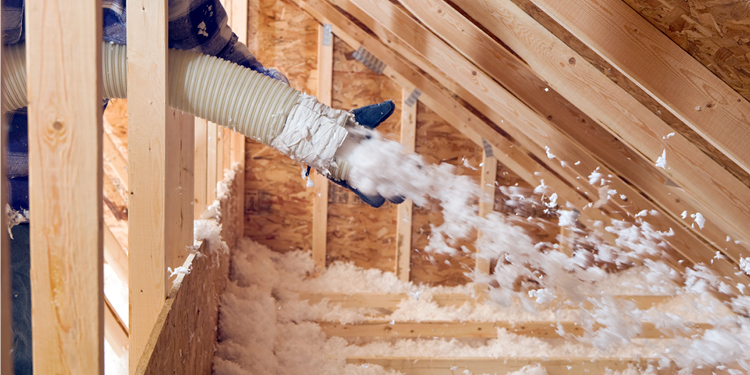How a young bird watcher helped save an osprey family
May 23, 2018
Updated: May 5, 2023
Birds! Kids! Utilities! All of the classic hallmarks of a great story.
Chevy Matthews from Peachland is a nine-year-old lover of animals who was upset when a windstorm last fall blew an active osprey nest near her school from its platform. She and her mom, Barb Haley, were worried that the osprey family had lost their home and hoped that someone would repair the platform before the following nesting season. So Chevy and Barb wrote a letter to FortisBC, asking how we would keep the osprey safe from the weather.
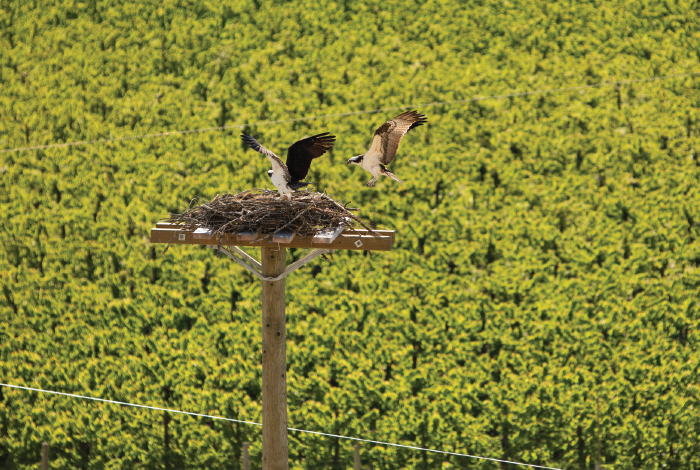
A mating pair of osprey on a BC Hydro platform in Lake Country were the stars of the show for a day of bird watching.
The osprey that Chevy was concerned about had established their home on one of BC Hydro’s platforms, so we reached out to our friends at BC Hydro with an idea: giving Chevy and her mom an up-close look at an active nesting site. BC Hydro provided the place—a nesting platform in Lake Country where the group could easily view a pair of osprey—and we provided one of our biologists, Roxanne Tripp, to give Chevy some inside information on osprey behaviour. We also wanted to let Chevy and Barb in on how electric utilities like FortisBC and BC Hydro work to protect osprey, because we love them as much as Chevy does.
House-hunting with osprey
Ospreys prefer to nest close to water, since 99 per cent of its diet is fish, and will seek out tall trees, platforms or power poles as prime real estate. Power poles are unsafe for the birds and can cause damage to electrical equipment, power outages and even fire when nest debris falls on the power lines. Both FortisBC and BC Hydro protect these birds by actively discouraging nest building on energized power poles by moving nesting sites to platforms that are taller, safer and more desirable to a pair of house-hunting osprey. Part of our Osprey Nest Management Program involves installing orange nesting guards on power poles to prevent the osprey from nesting.
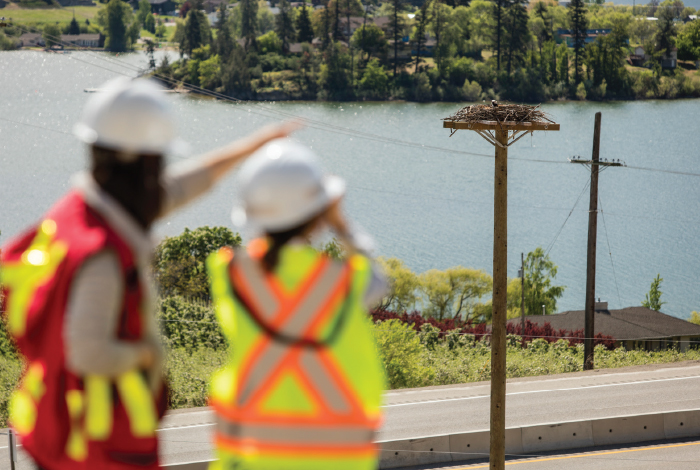
FortisBC biologist Roxanne Tripp (L) explains to Chevy Matthews (R) that osprey like to nest on the highest spot near their territory, which makes platforms so attractive.
Chevy learned that FortisBC doesn’t need to rebuild nests damaged in windstorms. In less urban areas, osprey naturally have to deal with nests that are damaged or destroyed and are very efficient at rebuilding them. They will continue to inhabit their homes year after year, as long as there is an ample supply of fish in their territory.
Chevy was also glad to report to us and BC Hydro that the osprey whose nest had been destroyed in the windstorm had gotten to work rebuilding it on the same platform.
Keeping eagle eyes on fish hawks
Our biologists closely monitor osprey on our platforms to ensure they’re healthy and behaving normally. Each day, osprey make several patrols over water in their territory. When it sees a fish, it hovers until the fish is in a suitable position. Then, it dives with its wings half closed and claws stretched forward, and disappears under the surface, reappearing a few seconds later with a fish clutched in its claws. For mating pairs, like the pair we observed with Chevy, the male will hunt for fish while the female sits on her clutch of eggs to keep them at the right temperature.
For those of us who can’t be out in the field on a regular basis to observe the osprey, we have our Osprey Cam, where you can watch our resident pair in Kelowna and their growing family.
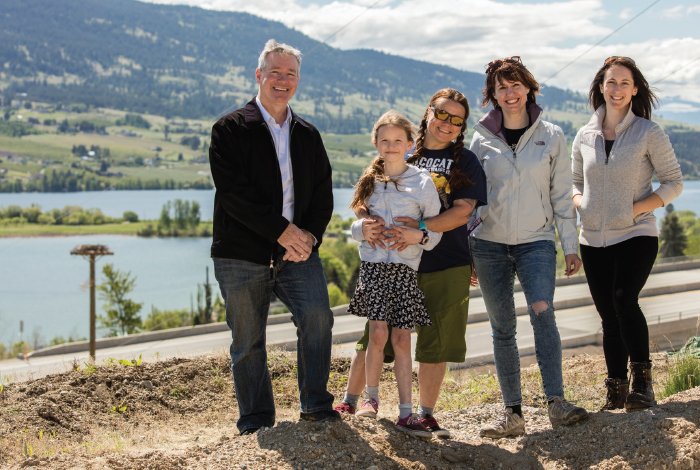
Joining Chevy Matthews (second from left) for a day of observing osprey were (L to R) Dag Sharman, Community Relations Manager for BC Hydro; Chevy’s mom, Barb Haley; Tanya Laing Gahr, Corporate Communications Advisor; and Roxanne Tripp, FortisBC biologist.

